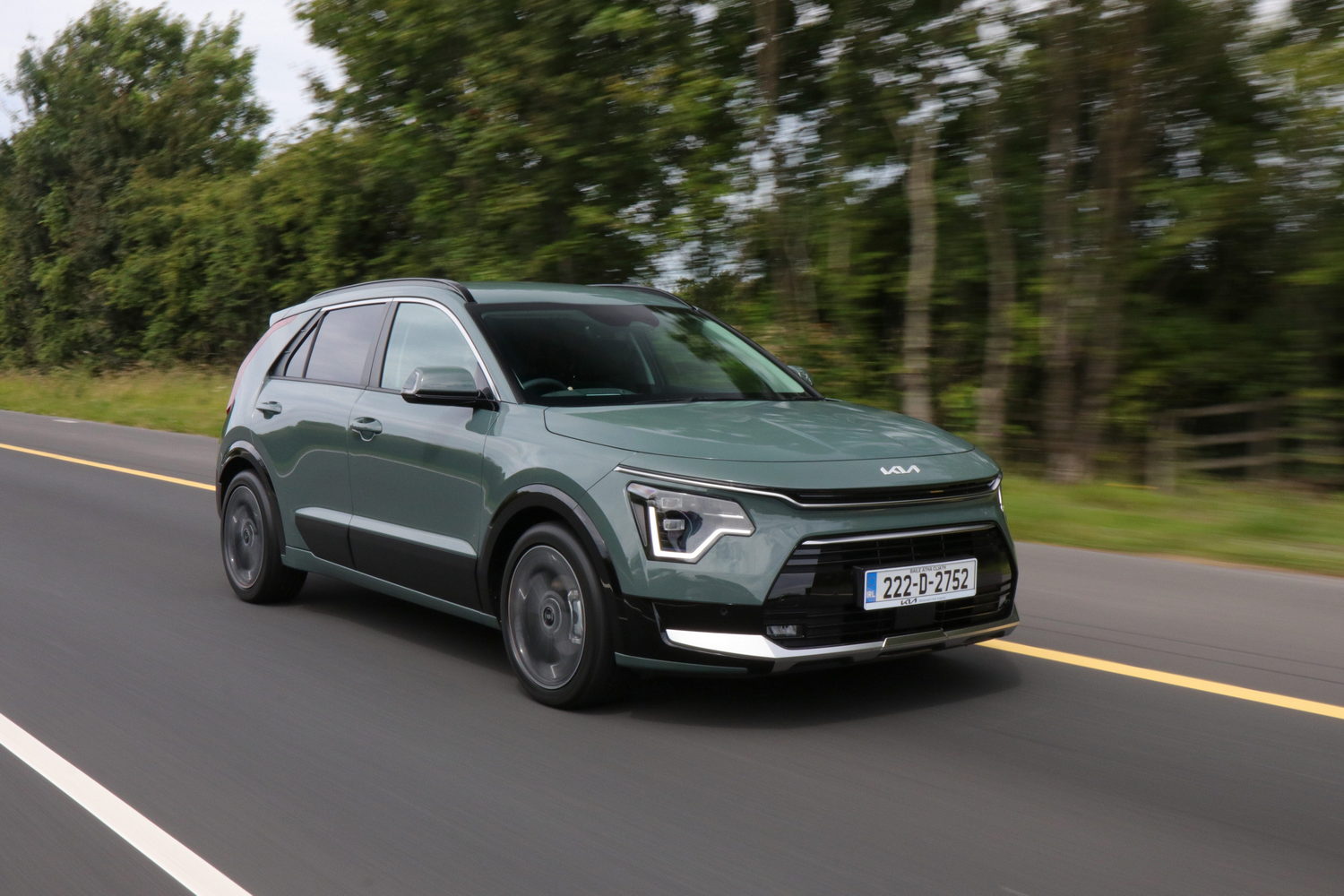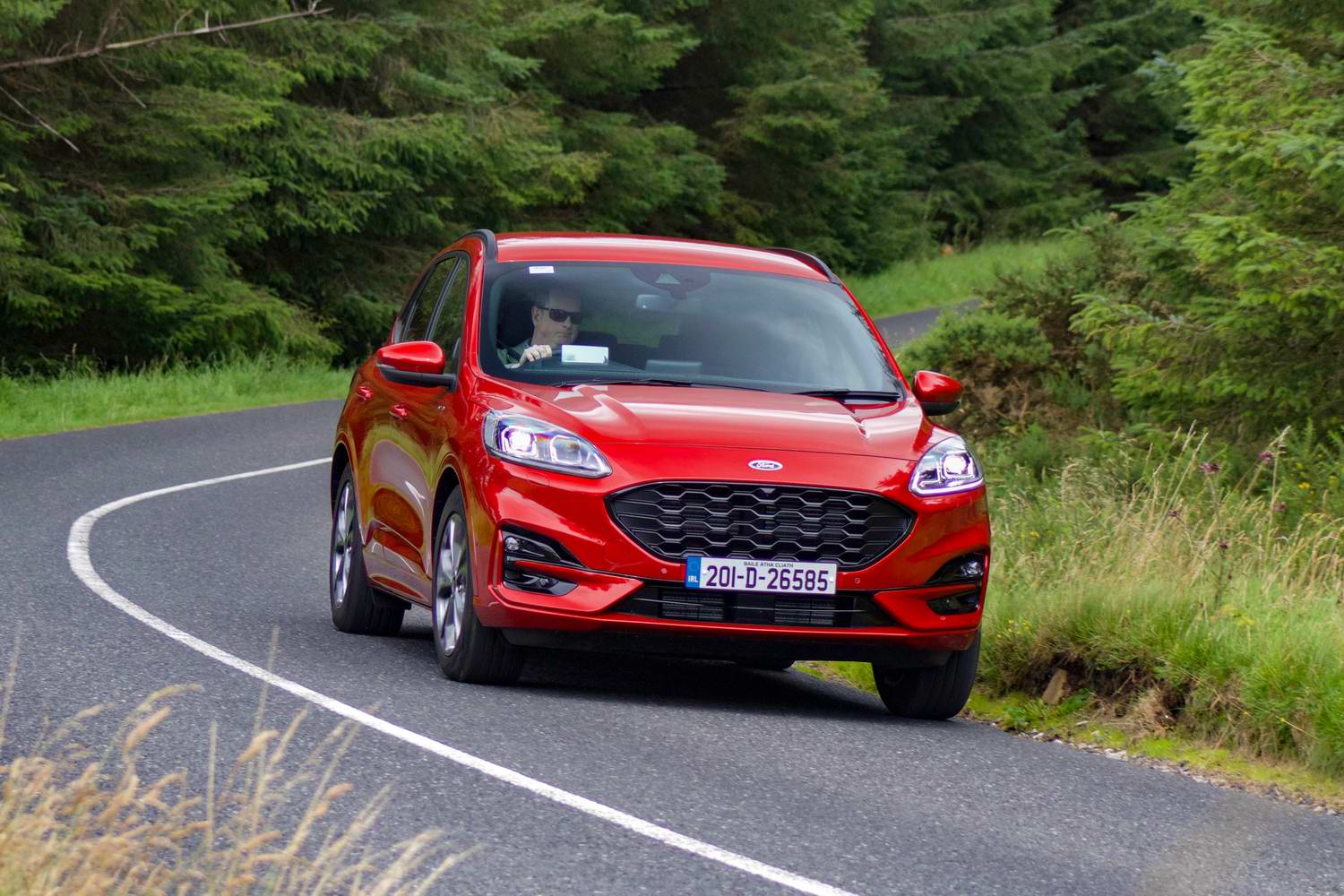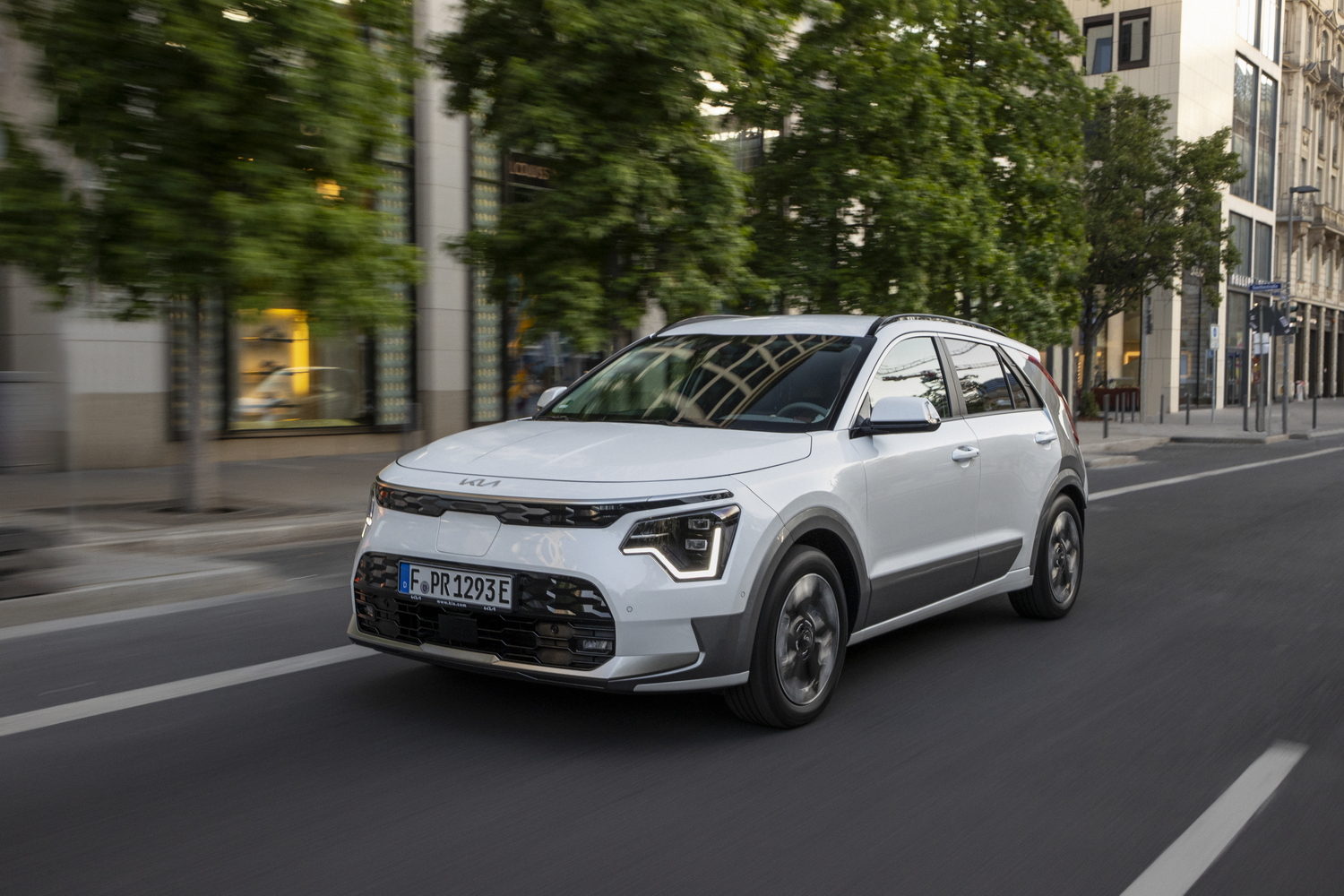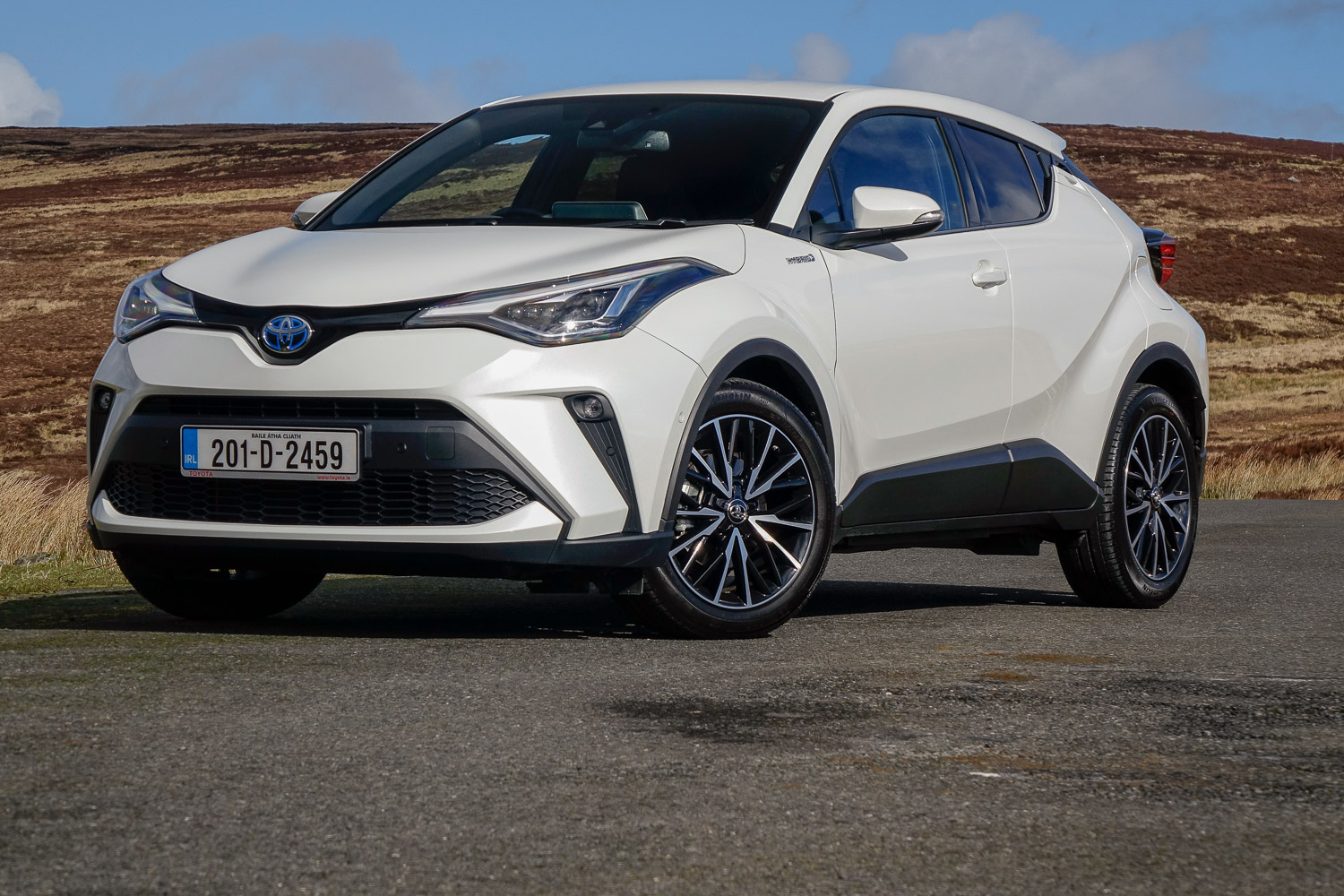Kia Niro PHEV overview
Kia's Niro was one of the first hybrid cars to provide real competition for the then all-conquering Toyota Prius when it was first introduced. Now, the Niro is back for a second go and, as with the previous model, comes in a choice of fully-electric or plug-in hybrid models (the regular, non-plug-in hybrid isn't on sale in Ireland just yet). To say that the new Niro looks vastly more interesting than the old one is something of an understatement. The previous Niro looked almost apologetically bland, but this new one is far more assertive in its styling. The blunt front end, with those deep, square headlamps looks almost arresting, while the rear, with its wrap-over brake lights, is good too. The same can be said for the 'side blades' that can be finished in a contrasting colour.
Under the skin, the new Niro is mechanically similar to the old one, but the hybrid system now has more power, and considerably more range on electric power alone. Does it all add up to a worthwhile compromise between electric and petrol power? Or should you just skip past it and get the fully-electric Niro EV?
The Kia Niro model range
As Kia does not offer the non-plug-in hybrid version of the new Niro in Ireland right now, the range kicks off with the Niro PHEV in K3 specification, priced from €38,500. Standard specification in this form includes 18-inch alloy wheels, roof rails, privacy glass, LED front and rear lights, a leather-wrap for the gear selector, part-leather (imitation leather) seats, heated seats in the front, reclining rear seats, a heated steering wheel, a 10.25-inch touchscreen, voice control, Apple CarPlay and Android Auto integration, a wireless phone charger (although you'll need to connect by cable to use Apple CarPlay), Kia Connect live services, dual-zone air conditioning and a long list of electronic driver aids, including autonomous emergency braking, lane-keeping steering, a reversing camera, radar-guided cruise control, blind-spot monitor and a driver attention monitor.
The higher-spec K4 version of the Niro PHEV (the one we're testing) has a starting price of €41,500, or €42,200 if you want the contrast-colour rear pillar. Standard spec for the K4 includes aluminium pedals, a rotary drive selector, full leather (still imitation) upholstery for the 'Premium Relaxation' seats, ventilation for those seats as well as power adjustment, heated rear seats, a 10.25-inch digital instrument panel that blends seamlessly in with the central touchscreen and a head-up display.
If you want the all-electric Kia Niro EV, that costs from €43,550 (or €44,550 with the contrast pillar) and comes only in K4 specification.
Both PHEV models have CO2 emissions of 21g/km.
The Kia Niro PHEV interior
Kia is really knocking things out of the park with its cabin designs of late, and the Niro is no exception. Certainly this K4 model has a really attractive interior, especially with that big, unbroken sweep of twin digital screens running across the dashboard. This is not an especially cheap car, but the initial quality of the cabin makes the price seem like solid value.
Those screens are good, too. The main driver's display is clear and logical, and can provide you with all of the information you might need. The central touchscreen has very rich, expensive-looking graphics and is pretty easy to find your way around, with little of the endless button-pressing and searching that some rivals require to access simple menu commands.
What really helps is the little shortcut panel below the screen. This can be toggled to either be your climate control panel, or to show a list of shortcuts for the big screen. While it's still not quite as simple as having physical heating and ventilation controls, it's a far better solution than just having everything up on the main screen.
Below that panel, there's a storage area that is home to a wireless phone charger, a 12-volt socket and a USB port. The centre console houses the neat rotary drive selector as well as the buttons for the heated and cooled seats and the heated steering wheel. Down there you'll also find the engine stop-start button - which lives within a rather nice jewel-effect bezel - the electric parking brake switches and the button that selects EV driving mode.
Behind all this there's a capacious cupholder area, in which the grippy bits of the cupholders can slide away leaving you with a big square space for holding something larger. Under the front seat armrest there's a small storage box, and this has a removable panel that opens it up into the rest of the cupholder area, creating space for storing any longer items. Think of it like folding back seats for your armrest storage. The only practicality demerit, really, is that the front door bins are a little bit narrow.
That's compensated for by the very comfortable front seats (living up to their 'Premium Relaxation' billing) that have rather pleasing tech-y looking integrated headrests, which, at the back, form a neat coat hanger. The driving position is set a little bit high up, but you get used to it and the two-spoke steering wheel, which gets a selection of simple and easy-to-use physical buttons (no haptic touch-sensitive controls and all the better for it) is nice to look at and pleasant to hold. The view out the front is excellent, thanks to the low-set dashboard and instrument panel, but the view over your shoulder is a little less good thanks to that large rear pillar. The very sharp reversing camera does make up for that, though.
In spite of the Niro's relatively compact dimensions (it's only 4.4 metres long and 1,545mm tall) rear seat space is pretty good, and rear-seat passengers get their own pair of USB-C sockets, mounted halfway up the backs of the front seats, which is hugely sensible. Down low on the floor, at the back of the centre console, there's a domestic 220-volt power socket, although oddly our test car had a two-pin European connection.
The only disappointment here is the boot, which in the PHEV model measures a relatively miserly 348 litres. That's just over 30 litres less than you get in a Golf hatchback, and it's considerably less than the 475 litres (plus 20-litre 'frunk' front storage area) offered by the electric Niro EV. Meanwhile, the powered tailgate, fitted as standard to this K4 model, feels a bit superfluous as the tailgate is small enough and light enough that you'd never struggle to get it flipped open by hand, and you'd be quicker doing it yourself.
The Kia Niro PHEV driving experience
There is one issue with how the Niro PHEV drives, and it's to do with the spec fitted to Irish cars. In theory, the Niro PHEV, on a full charge of its 11.1kWh battery, can go for 65km on electric power alone. However, that figure is only achievable on the basic 16-inch alloy wheels, and those aren't available in Ireland. Instead, we get standard-fit 18-inch rims, and those drop the electric-only range down to 59km.
Now, that's perhaps a slightly harsh criticism - losing 6km of range isn't that bad in the scheme of things, and the Niro PHEV will pretty reliably get you further than 50km on an electric charge, as long as you're not driving constantly on the motorway. Still, you'd wonder if on the smaller wheels you could get a little bit closer to that 65km figure, and there's a sense that just over 60km of range sounds a lot better than just under, even if realistically the difference isn't all that large.
Smaller wheels might also improve the ride quality, which can be a bit too firm at times, even if it never actually descends into harshness. The Niro PHEV does manage to avoid the nodding-dog bouncy ride quality that, at times and on certain roads, seems to afflict the heavier all-battery EV model.
The steering is overly light and to be honest not all that bothered about telling you what's happening under the front wheels. That's pretty much the same as you got from the old Niro PHEV, but the good news is that behind the mushy steering, the Niro now feels more solidly planted on the road than before, and you can tell that the structure of the car is stiffer. It's not fun to drive at all, but neither is it entirely unsatisfying.
What's really impressive, though, is the long-range performance when running in hybrid mode. This is an aspect that often trips up plug-in hybrids and, thanks to their hefty kerb weights, they often end up returning frankly disastrous fuel consumption - sometimes worse than 7.0 litres per 100km - on long motorway runs. That's not the case with the Niro. At 1,610kg the Niro PHEV isn't a featherweight, but neither is it in danger of needing membership to Weight Watchers, and that definitely helps on a longer run.
Pounding up and down the motorway from Dublin to Belfast and back, the Niro PHEV returned an average of 4.8 litres per 100km - that's knocking on the door of 60mpg and far, far better than the circa 6.0 litres per 100km that most rival PHEVs can offer on a long haul. It's an economy figure that gives the Niro PHEV a distinct advantage over its competition, and arguably makes it a better all-rounder than the fully-electric version. Given Ireland's still-sparse and unreliable EV charging network, as long as you can charge at home, the Niro PHEV should be in effect an electric car for almost all of your daily driving, but you can undertake longer journeys without needing to meticulously plan and backup plan around public charging, and break neither the bank nor the planet with your fuel consumption. The only other PHEV that we've driven that's quite so impressively multi-role is the Toyota RAV4 PHEV.
Our verdict on the Kia Summary PHEV
The new Kia Niro PHEV takes all that was good about the old one - relative affordability, frugal long-range driving, decent electric-only range - and makes it all slightly better. True, it's pricier than it was, but you're getting a much-improved (potentially class-leading) cabin, impressive long-run frugality, useable electric range and a car that looks far more interesting to the eye on the outside. It's not without a few small foibles, but this new Niro is seriously impressive.
What do the rest of the team think?
On the outside, the Niro has gone from being an obvious SUV-like vehicle to something much closer in concept to a regular C-segment hatchback. Think of it like that and it seems a tad expensive; though, as Neil mentioned, the K4 model's cabin certainly makes up for that. I also really like the exterior styling. Shame its capability on the road is hidden behind too-light driving controls, but that's not going to bother many buyers. They will like the decent electric-only range and overall refinement, but shame the boot is so small. A mixed bag then. The Niro EV could be a better option if you can afford it.
Shane O' Donoghue - Editor







































